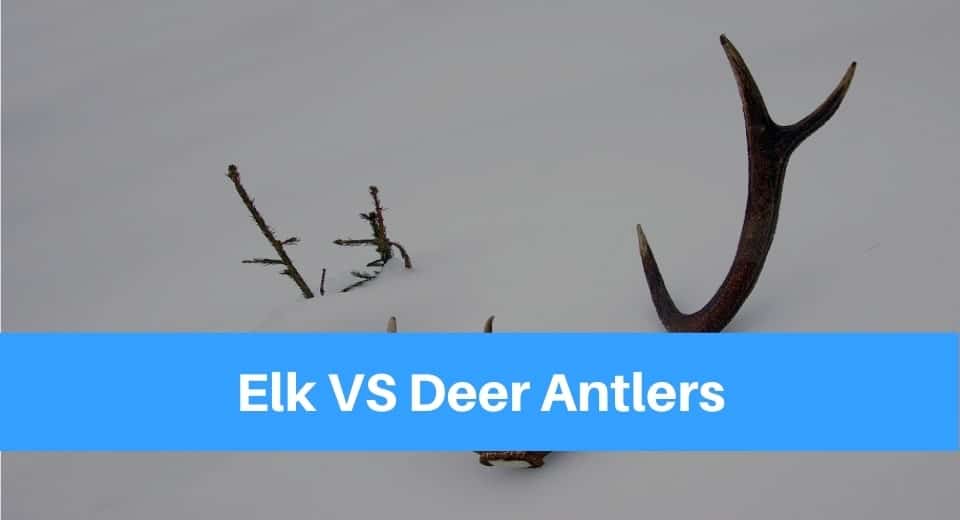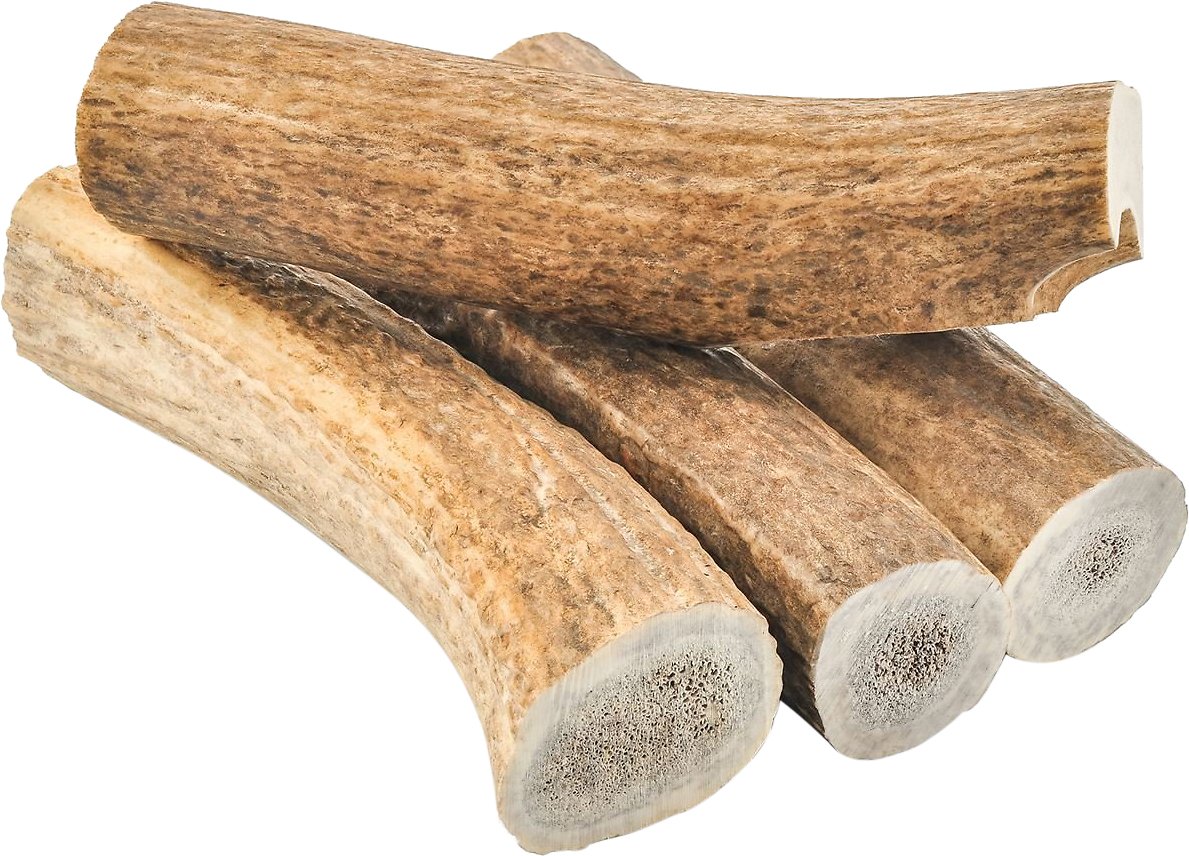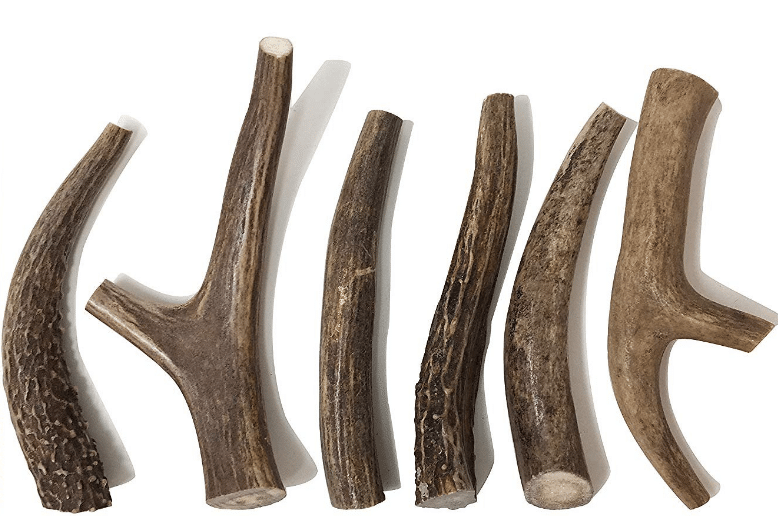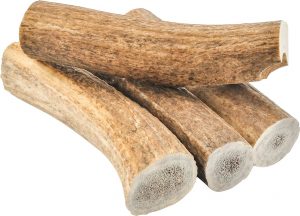You must be here because you have decided to give your dogs some antlers, which are popular chews for pooches. But, you must have quickly realized that the decision-making does not end there, as antlers come in many kinds.
There’s elk and deer, which are the top picks for most, and a few more in between. You must be wondering if there are any notable advantages of one over the other.
Well, lucky for you, we’re tackling just that, and a bit more. We’ll begin with the advantages of these two choices and then dive right in with the comparison of elk and deer antlers based on their health benefits and hardness, among others.
- Easier to chew for most dogs
- Not as dense as other types of antlers
- Produced naturally as elks constantly shed
- Can be stored for many months or even years
- Rich in bone marrow
- Has weaker odor than other antlers
- All-natural without causing harm to deers
- Rich in nutrients needed by canines
- Does not easily splinter
- Can last for a long time because of its hardness
Criteria For Choosing Antlers
Density and Hardness
When giving your dog some chews, your top concern may be its hardness and density. After all, you would not want to cause any damage to your furballs’ sparkly whites.
Thankfully, antlers of all kinds sit in the sweet spot where it is hard enough to last your pet a long time but at the same time dense enough that it would not cause injury to your dog.
When it comes to Deer VS Elk Antlers, elk is more preferable for us between the two. It is softer than deer antlers because the exterior is not as rich and thick as the bone marrow. This means that it is easier to munch on for your pets.
Appearance
Although deers and elks belong to the same family [1], the antlers they shed are not the same in appearance.
Due to their size, elks tend to produce larger antlers which can weigh up to as much as 10 lbs each. The antlers are elongated, akin to a tree branch with thinner points sprouting from the primary beam. The colors are typically brown and red, with the tips lighter.
Deer antlers are thinner and smaller. When it comes to color, deer antlers are the same as elk antlers, playing in browns and coming with lighter tips. Elk antlers are generally heavier; deer antlers weigh a lot less regardless if it’s a mule or a whitetail deer’s.
Nutritional Value
When it comes to nutritional value, there really is no significant difference between deer and elk antlers. Both are rich in protein. The marrow within is also abundant in minerals, which include magnesium, iron, zinc, calcium, phosphorus and potassium.
However, be careful not to give them too much, or help your dog with control if you notice that they are chewing excessively. When a large amount of the chews have been ingested, the proteins can cause an upset stomach.
Safety for Different Dogs
Antlers are generally appropriate for dogs of all ages. However, older dogs might benefit better from elk VS deer antlers because, as we already established, they are softer.
Seniors have an increased chance of cracking their teeth so it is better to be careful. A veterinarian might suggest going with a different chew completely.
Meanwhile, size is more of an issue for pups than hardness. Some pups tend to swallow chews whole, and if you are not careful, you might accidentally choke your dog by giving it antlers.
Thankfully, you can buy antler chew tips, which are smaller. You might also want the same for your tiny-sized dogs.
Sustainability and Durability
The good thing about antlers, elk and deer alike, is that they are renewable. Members of the deer family shed their antlers with no force and no need for hunting. They can also be readied for purchase without using harmful chemicals.
In terms of how long they last, elk and deer antlers have no difference. Depending on the seller, some can go for many months or even years before they become unfit for chewing. If you want to save up for a rainy day, you certainly can stock, with little worry that they will become brittle or have splinters.
Dental Benefits
By giving antlers as chews, regardless of the type, you help promote better dental health for your pets.
Better looking gums and teeth are both results of chewing when it comes to canines. This is because the antlers help remove tartar and plaque that have accumulated through the years, just like a toothbrush.
There are even more benefits depending on their age. For puppies, it can help relieve the pain that comes with growing teeth. Meanwhile, for the seniors, chewing antlers can help maintain the strength of their jaws.
General Canine Health
Chewing in general has many benefits, but these are in a way amplified with antlers, may they be from deers or antlers, because these last longer than other chews. It can help canines deal with stress or anxiety that they might be feeling. By chewing, dogs also have a healthy activity that they can spend time and energy on.
Thanks to their nutrients, antlers can also help your dog’s coat appear healthier and shinier. Allergies are also a non-issue for these chews.
Although it can upset your dog’s stomach at first when they are still getting used to antlers, this will eventually get better. Canines of any age have less digestive problems when they are given antlers.
Conclusion: Elk OR Deer Antler?
We’d say that picking one type of antler over the other can be up to personal preference. Elk antlers have one major advantage, though.
Elk antlers are best if you have dogs with sensitive teeth. These can be seniors with weaker teeth and jaws. Elk antlers are softer than deer antlers and would be less likely to cause dental fractures, while still helping jaws become stronger.
Deer antlers are best if you have active, ferocious chewers, including some puppies. They last just as much as elk antlers but are a tad harder.
Chewing on them can make dogs feel less stressed and frustrated. Just make sure they are tiny enough for pups and tiny dogs.







